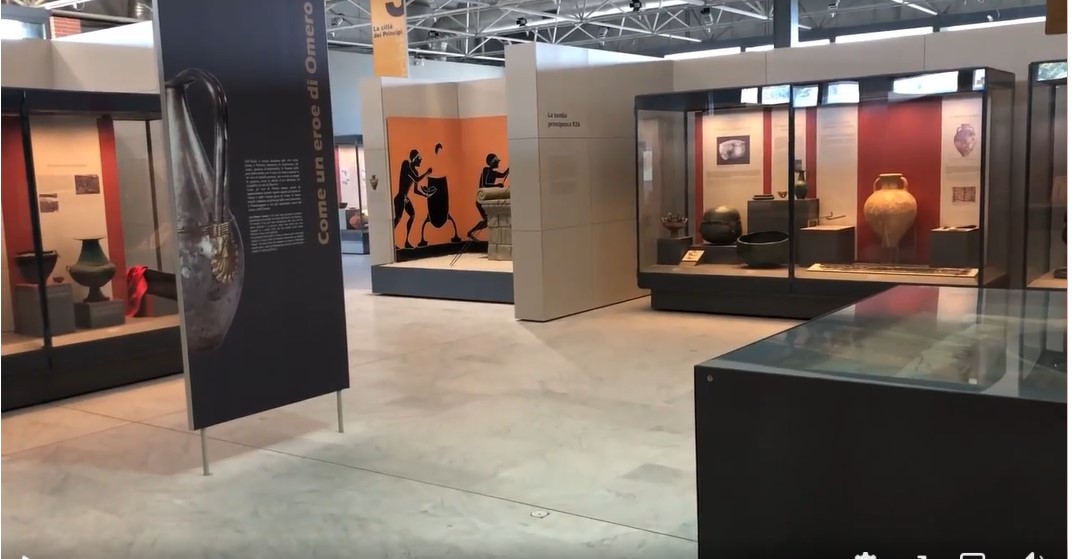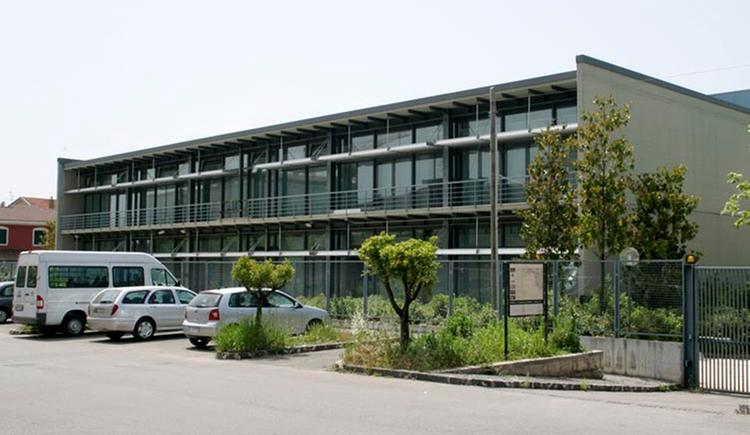Just 5 miles outside the city of Salerno, on its southern boundary, is a town of roughly 30,000 residents that is of little interest to tourists except as a superb jumping-off point to visit the glorious sites of the Amalfi Coast and of the magnificent Greek ruins of Paestum. The town is Pontecagnano-Faiano.
Yet Pontecagnano has made a major contribution to our understanding of the ancient history of the Italian peninsula and who populated it. In short, to answering the question: who were the ancient Italians?

The Etruscans remain the glamorous but ineffable ancient people that we know so little about. Almost all of the thousands of Etruscan inscriptions that we have found consist of funerary notes and the names of the buried. We know the alphabet, we can pronounce the names, but we know little beyond the fact that the language and the people were not Indo-European. Although Pliny (HN 3.70) already suspected that the Ager Picentinus on the Tyrrhenian coast NW of the Sele was once Etruscan territory, the modern accepted view has been that the Etruscans did not settle south of Tuscany and Umbria—an area that is usually referred to as “between the Arno and the Tiber”, beginning in 1,100 BC.
The discovery of extensive tomb fields in Pontecagnano that date from the Early Iron Age to the Roman period, (with a gap from the 6th c. to the 4th c.) changed all that when starting in the 1960’s, archeologists started unearthing a vast Etruscan necropolis. The discovery, with its fantastic findings, effectively changed everything we knew about Etruscan civilization, its diffusion, and the history of the region of Campania. This is now the present site of the Pontecagnano Archeological Park.
The area was settled as early as the Copper Age (3500-2300 BC), as testified by the archaeological excavations of two sanctuaries and two necropolises. In the 9th-8th centuries BC remains belonging to the Villanovan Culture, predecessor to the Etruscan, have been found. The Etruscan presence was at its peak in what is now Pontecagnano, around the year 600 BC and shortly thereafter, when it was called Amina and it co-existed with some of the fabled cities of Magna Grecia such as Poseidonia (Paestum), Velia, Pithecusa (Ischia) and Cuma. Although now it is an unremarkable town, it was once a major crossroad of merchandise, ideas and peoples from all over the Mediterranean: Greeks, Phoenicians, Etruscans and others. The city started to decline around 550 BC. Like other Italic peoples, the Etruscans of Amina rebelled against Roman hegemony in later struggles; for example, they sided with Hannibal in the Second Punic War–a choice that cost them dearly. The Romans twice razed Amina to the ground.

Modern excavations were first started by P.C. Sestieri in 1959. They are currently under the direction of Gina Tomay and are ongoing, attracting stellar archeologists from many countries. Pontecagnano is particularly famous for its Iron Age and Orientalizing tombs with rich grave goods revealing that Pontecagnano in these periods played a pivotal role for exchange and cultural interactions in the greater part of the Italian peninsula and Sicily.
So far, archaeologists have found about 9,000 tombs in the area. Many of the artifacts such as pottery, jewelry, and domestic goods may be viewed at The National Archaeological Museum of the Agro Picentino (Picentine Plain) and at the Archaeology Park of Pontecagnano, with artifacts running from the Prehistoric (3,500-2,300 BC) to the age of the Romans (3rd century BC to 5th century AD).

At its height, the town of Picentia, as in Etruria proper, seems to have been a society in which political and economic power was in the hands of an aristocracy, dominated by powerful princes who lived a luxurious life-style. The museum has an impressive display of one the oldest aristocratic tombs yet found in Campania. It is of a princess, accompanied in death by a vast array of jewelry and other symbols of rank. Such tombs reflect a certain social model in which Etruscan women enjoyed greater prestige and power than their Greek or Roman counterparts.
The recent find in August 2021–the remains of a 12-year-old boy wearing a warrior’s bronze belt and ceramic cups at his feet for food and wine in the afterlife— is the 10,000th find at Pontecagnano in over 60 years of success. The museum displays objects from Greece to Egypt, Sicily and Sardinia, even the Far East, all of it found at Pontecagnano.
Without a doubt it’s a must-see attraction for tourists, especially for history buffs. Rome’s Colosseum is the number one visited tourist site in Italy. Pompeii is number two. The excavation site of the necropolises and the National Archaeological Museum should be in the top attractions. But with so many other fantastic sites in the area such as Paestum, Herculaneum, Pompeii, Sorrento, Capri, and half-a-dozen other “must-see” places, all within easy reach, it’s hard to pick and choose. It’s certainly worth a visit if you would like a more in-depth look at Italian history, indeed, the history of Western civilization —before the Romans and even before the Greeks.

As for accommodation, there are many wonderful choices along the Litoranea in Pontecagnano. The best is the 4-star Hotel Olimpico Resort, which meets the highest standards that any traveler could desire, with beautiful, clean, and cheerful rooms of varying types to accommodate all needs–even stand-alone villas with a private pool on a beautifully landscaped property. The Hollywood-style main pool is a great place to relax and the cuisine, both homey and sophisticated at the same time, is served by a warm and friendly staff. Those who prefer to swim in the sea, will be happy to hear that there’s a private beach right across the street. They also offer a free shuttle to take you to Salerno’s train station or the seaport where you can hop on a ferry that tours the islands of the Amalfi coast.












